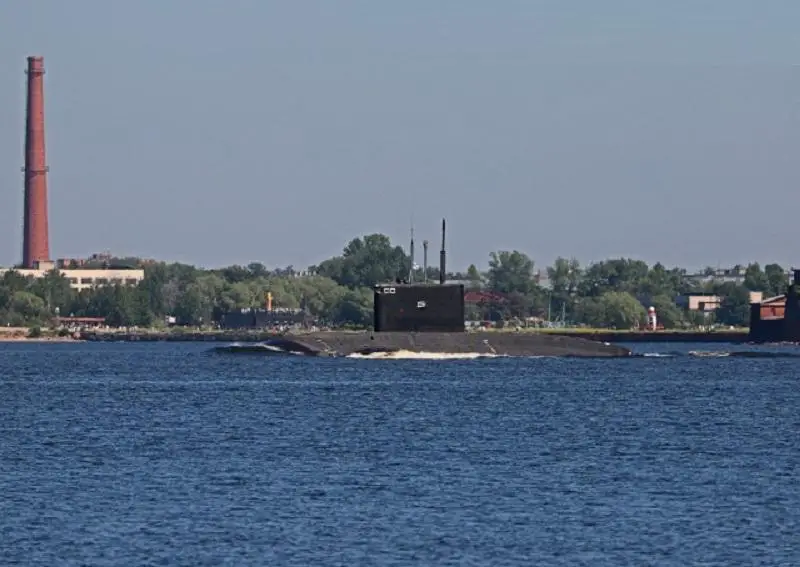The Project 636.3 diesel-electric submarine Ufa built for the Russian Pacific Fleet will enter service on November 16. Russian Navy Commander-in-Chief Admiral Nikolay Yevmenov approved the date for the Project 636.3 diesel-electric submarine Ufa built at the Admiralty Shipyard of the United Shipbuilding Corporation in St. Petersburg to enter service with the Navy. The ceremony of hoisting the St. Andrew’s (Russian naval) flag and accepting the submarine for service into the Navy will take place on November 16. In addition to the Russian Navy chief, Deputy Industry and Trade Minister Viktor Yevtukhov and Admiralty Shipyard CEO Alexander Buzakov are expected to attend the sub’s acceptance ceremony.
The Ufa is the fourth submarine in a Project Varshavyanka 636.3 (NATO reporting name: Improved Kilo-II) diesel-electric submarine under construction for the Russian Pacific Fleet. It was laid down in November 2019. Project 636.3 submarines (NATO reporting name: Improved Kilo-II) belong to the third generation of large diesel-electric subs and are among the world’s quietest underwater cruisers. They are 74 meters long and displace more than 3,900 tonnes. Due to their strong hull, these submarines have an operational depth of 240 meters and can dive to a maximum depth of 300 meters. The submarines of this Project have an operational range of up to 7,500 miles. They are armed with Kalibr-PL cruise missiles that are launched from torpedo tubes from the sub’s submerged position.
The Kilo class, Soviet designation Project 877 Paltus (Halibut), NATO reporting name Kilo, is a class of diesel-electric attack submarines originally designed in the 1970s and built in the Soviet Union for the Soviet Navy. The initial version of Kilo submarines entered operational service in 1980 and were built until the mid-1990s. Production was switched to the more advanced Project 636 Varshavyanka variant in the mid-1990s, also known as Improved Kilo class in the West. These submarines are mainly intended for anti-shipping and anti-submarine operations in relatively shallow waters. In June 2022 an unconfirmed report from within Russia’s defence industry suggested that a further tranche of six additional Project 636.3 vessels might be ordered to start construction in around 2024.
















